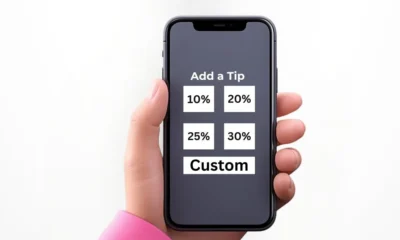HEALTH AND FITNESS
Guide to Understanding NDIS Short Term Accommodation in Adelaide

The National Disability Insurance Scheme (NDIS) is transforming the disability support services for individuals with disabilities in Australia. Moving beyond a one-size-fits-all approach, the providers offering short term accommodation in Adelaide are bringing forward your goals, needs, and preferences.
Among many other services, if your disability requires Short-Term Accommodation (STA), the NDIS scheme offers short-stay accommodation for eligible NDIS participants. This service is for every NDIS participant with a disability who needs special care and attention while their caregiver needs a temporary break.
Understanding all about short stay accommodation is crucial. This blog will guide you through the NDIS Short Term Accommodation, its benefits, the application process, and what you, as a participant, can expect.
What is NDIS Short Term Accommodation?
Better known as respite care, NDIS short-term accommodation is one of the disability services offering housing facilities for a few days, months, or a year.
NDIS providers offering short-term accommodation in Adelaide often occupy specialist homes, group homes, or standalone apartments. These are accessible for your specific disability. During your stay, these housing arrangements serve you with personal care, engage in social activities, offer healthcare services, and ensure round-the-clock safety.

Depending on your disability goals and personal needs, you can choose to have accommodation for a few days to several weeks.
Benefits of NDIS Short-Term Accommodation
Here are some of the best benefits of securing short-term accommodation services from an NDIS provider.
Relieve Caregivers for Temporary Time:
Disabilities are stressful without hope. In most individuals, the impact of physical or mental impairments dents a caregiver’s personal needs.
With short-term accommodation in Adelaide, your caregiver can look after their lifestyle in a carefree manner. Also, this break helps them to recharge after spending a persistent time in your care and support. That too, when this service provides the reassurance of your safety and care under a short-stay housing facility.
Brings Positive Change for Participants:
You find your disability less of a burden with the new environment and flexible routine. In fact, there is a constant sense of belonging to a community which empowers & transforms your physical and mental health.
More than that, these services allow you to partake in different fun and recreational community activities. The intent behind the service is to encourage you to meet new people and reduce feelings of isolation.
Better Access to Specialized Care:
Facilities for short-term accommodation in Adelaide have trained staff who understand the unique needs of every disability participant. They are also capable of managing medications and handling specialized equipment. Hoists, feeding tubes, adjustable beds, bathroom-accessible grab bars, and shower chairs are accessible and safe for every individual.
Skill Development:
Apart from social interaction activities, STA programs include teaching participants cooking, money management, budgeting, travelling, and other life skills. This is a major perk for understanding your life aspirations and working together to achieve a goal.
Eligibility for NDIS Short Term Accommodation
To be eligible for STA, participants must have an approved NDIS plan that includes funding for short-term accommodation in Adelaide. Every disability requires short-term accommodation to receive the best care and attention and to reduce the pain of the disability.
However, if you are dealing with chronic illness, post-surgery pain, or are coping with severe disability, short-stay housing becomes more of a requirement. Let’s now discuss the application process.
How to Apply for NDIS Short Term Accommodation?
Here are some of the steps you must follow when applying for the short-stay housing under the NDIS scheme.
Assess Your Needs:
Before you apply, review your NDIS plan to find the inclusion of a short-term accommodation under the Core Support category. You must also determine the duration and extent of services you can avail yourself of before proceeding with further steps.
Consider if your caregiver requires temporary respite. See if changing your place and routine will improve your health. Additionally, you must see if the house contains more privacy and support for your disability. Remember that only when you are eligible will you receive funding for short-term accommodation in Adelaide.
Discuss With Local Coordinator:
During the NDIS plan meeting, discuss the need for STA with your local coordinator. Provide details of your goals, motivations, and concerns, which will allow you to consider respite care. Also, you must state its benefits for your health and for the caregiver’s personal life. Giving supporting evidence to show your serious consideration is the key to achieving successful results.
Choose a Provider:
Once you get the approval for STA in your plan, choose a registered NDIS provider that offers short term accommodation services. You will likely find them through the NDIS provider finder tool. The key is to ensure the provider’s facilities and services align with your needs and preferences.
Book Your Stay:
Coordinate with your chosen provider about the booking process and policies before deciding on any short-term accommodation facility. Discuss any specific requirements you should provide and state your preferences to confirm your availability.
Final Words
We hope you found this blog useful and informative. As you see, the NDIS-approved short-term accommodation in Adelaide is a disability service that extends beyond the housing facility.
With high-quality health needs in check, support workers and providers offering disability services ensure that your experience in a centre or group home remains comprehensive, safe, and attentive to your needs.
Now that you are familiar with short-term accommodation, its benefits, and the application process, take the time to consult the right provider, such as Aeon Disability Services. As you are going to spend most of your time under the assistance of NDIS, preparing well enough doubles the benefits of this valuable NDIS service.
-

 BIOGRAPHY7 months ago
BIOGRAPHY7 months agoBehind the Scenes with Sandra Orlow: An Exclusive Interview
-

 HOME1 year ago
HOME1 year agoDiscovering Insights: A Deep Dive into the //vital-mag.net blog
-

 HOME1 year ago
HOME1 year agoSifangds in Action: Real-Life Applications and Success Stories
-

 BIOGRAPHY1 year ago
BIOGRAPHY1 year agoThe Woman Behind the Comedian: Meet Andrew Santino Wife




























